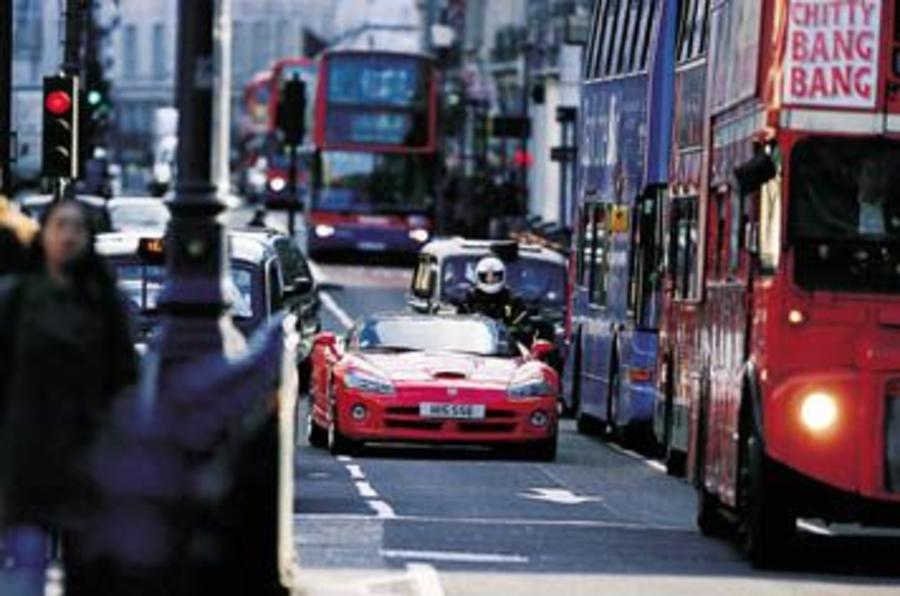Let’s assume, for the moment, that you’ve just inherited a diamond mine. You can afford any car you like, and the latest, 2005-spec Dodge SRT-10 is in the frame. Should you sign the cheque? Possibly, but first there’s a burning question you must answer, one which will massively affect your ownership experience: do you want the car for itself or for the promise of its performance?
This is a question buyers of fast cars should always ask themselves, though they rarely do. But it’s especially important in the special case of Dodge’s thundering 8.3-litre roadster because it completely governs whether you’ll end up loving the car or loathing it.
Before you answer, let me explain why it matters so much. If you’re buying this car on the basis of its 190mph top speed and sub-four second 0-60mph time, thinking it’s going to be blindingly quick wherever you go in Britain and Europe, you have a major disappointment in store. Any car this wide, in which you sit this low, with a bonnet this long, which weighs this much, whose gearbox action is this slow and whose overall gearing is this tall, cannot be the fastest thing on the roads of Britain.
On the other hand, if you love and understand big American cars, if you enjoy the challenge of deploying enormous torque, if you even get pleasure from the simple act of firing up an engine with that much capacity and that many cylinders, then this Dodge SRT-10 could be ideal. However, you’d better get on the phone fast. DaimlerChrysler has fewer than 20 SRT-10s to sell in the UK next year. And ring your accountant, too: the on-road price is an eye-watering £77,500, at least £30,000 bigger than the tag just announced for the (admittedly lower-powered) Chevrolet Corvette.
However, when you settle into the Dodge to drive, your thoughts will not be on money. Funnily enough, I found myself thinking of this as a massively powerful, hugely updated big Healey: same long nose, same feeling of size, same ultra-low seating position. And the interior reminds you of a very big Mazda MX-5: no challenge or confusion in the cockpit layout, and mainstream manufacturer quality in the materials and fittings.
The cockpit itself is bigger than that of the first- and second-generation models, mainly because a longer wheelbase allows a couple more inches of cockpit length. It’s comfortable now, though still snug, mainly because your backside is lower than the fat side-sills that contain the car’s exhaust side-pipes. When you’ve been going for it, or even crawling around town, the sills get really hot, and there’s a pervading smell of cooking composite, but Dodge swears the system is durable.
It would have been easy enough, on our day out with this SRT-10, to obey the cliché – to find a test track and paint it black with the rear tyres. As seen on TV. However, real people will buy this car, and they’ll want to know it has a practical soul. So we pointed its nose for London, for a day of reality checking.
The engine starts instantly and runs with a flat, even rumble, not the ‘woofle’ of a V8. It’s obviously big: the car rocks to the left when you blip the throttle, yet the response is surprisingly quick and crisp – I’d have expected a mighty flywheel tied to the end of this engine, but there’s little sign of it. A push on the heavy, long-travel clutch, snick the heavy, short-throw gearlever forward into first, and we’re away. Clutch bite is progressive, and the car ambles off the mark. It drives easily at low revs.






























Add your comment